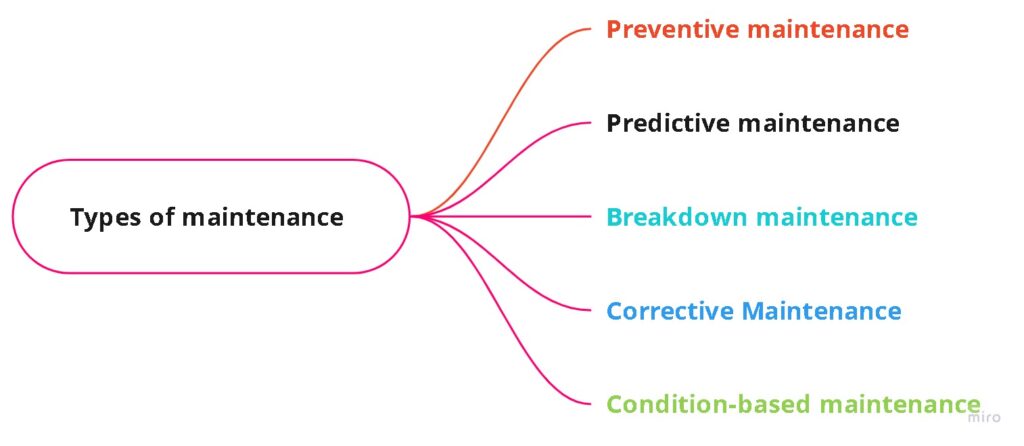Breakdown maintenance
Breakdown maintenance is a prominent approach to equipment maintenance that primarily centers around resolving issues as they arise, rather than implementing preventive measures. While this strategy may offer certain advantages, it also presents several drawbacks that can impact operational efficiency and overall productivity. In this comprehensive exploration, we delve into the benefits and drawbacks of breakdown maintenance, shedding light on its impact within various industries and providing valuable insights for decision-makers and maintenance professionals.
Breakdown maintenance, a reactive approach to equipment maintenance, plays a significant role in the operational landscape of numerous industries. By fixing issues as they occur, this maintenance strategy aims to minimize downtime and address immediate problems swiftly. In this article, we delve into the benefits and drawbacks of breakdown maintenance, offering a comprehensive analysis that will assist maintenance professionals and decision-makers in understanding the impact of this approach on operational efficiency. Join us as we explore the proactive steps to ensure your equipment remains reliable and optimized.
 |
| Type of breakdown maintenance |
How many types of breakdown maintenance?
Breakdown maintenance is typically categorized into three main types:
Corrective Maintenance: This type of breakdown maintenance focuses on fixing equipment or machinery after a breakdown or failure has occurred. It involves identifying the root cause of the failure, repairing or replacing faulty components, and restoring the equipment to its operational state. Corrective maintenance aims to minimize downtime and restore functionality as quickly as possible.
Emergency Maintenance: Emergency maintenance is a subset of breakdown maintenance that deals with critical failures requiring immediate attention. These failures pose significant risks to safety, production, or the environment. Emergency maintenance teams prioritize rapid response and take swift action to address the issue and restore operations.
Deferred Maintenance: Deferred maintenance refers to situations where breakdowns are temporarily ignored or delayed due to factors such as limited resources, time constraints, or prioritization of other maintenance tasks. Although not an ideal approach, deferred maintenance is sometimes used as a short-term solution, with the intention of addressing the issue during scheduled maintenance or downtime periods.
It’s important to note that these breakdown maintenance types are reactive in nature and focus on resolving issues after they occur. While they can be effective in certain situations, implementing preventive maintenance strategies alongside breakdown maintenance is recommended to ensure long-term equipment reliability and minimize disruptions.
What is the goal of breakdown maintenance?
The primary objectives of breakdown maintenance include:
Swift Issue Resolution: The main goal of breakdown maintenance is to identify and rectify equipment failures as quickly as possible. By promptly addressing the issue, the aim is to minimize the impact on productivity, reduce downtime, and restore the equipment to its operational state.
Cost Reduction: Breakdown maintenance can be a cost-effective approach in certain situations. Instead of investing resources in regular preventive maintenance tasks, breakdown maintenance focuses resources on addressing actual failures when they occur. This approach can potentially save costs on unnecessary maintenance activities and spare parts inventory.
Resource Optimization: Breakdown maintenance allows organizations to allocate their maintenance resources more flexibly. Instead of conducting routine maintenance tasks regardless of equipment condition, resources can be directed towards addressing specific failures and critical issues as they arise, maximizing the efficiency of maintenance efforts.
Operational Continuity: By quickly responding to equipment failures, breakdown maintenance aims to minimize disruptions to production or operations. The goal is to restore functionality and ensure that the equipment is back in service as soon as possible, minimizing the impact on overall operational continuity.
While breakdown maintenance can offer advantages in certain scenarios, it is important to note that relying solely on this reactive approach may result in increased downtime, higher repair costs, and potential safety risks. Therefore, it is often recommended to combine breakdown maintenance with preventive and predictive maintenance strategies to achieve a comprehensive maintenance approach.
what are the causes of breakdown maintenance?
There are many causes of breakdown maintenances listed below.
- Improper maintenance
- Planed inspection not to be done on time.
- Not proper operation
- Design problem
How to minimize breakdown maintenance?
- Operate equipment within the designer limit
- To do regular preventive maintenance
- Follow the checklist during preventive maintenances.
- Overhauling and parts change on regular time
- To do regular inspection
- To do LLF (look listen feel) daily
Why breakdown maintenance could occur in plants.
- A pump is running overload and failed due to the wrong operation,
- The incurrent part has been installed.
- Could be lubrication issue or wrong lubricants used.
What are the advantages and disadvantages of breakdown maintenance?
Advantages
- Very few staff need it.
- Take time to repair
- Easy to understood what is failed and how to repair
- Less time for repaired
Disadvantages
- Downtime of plant increase
- Production loss
- Some difficult to find out the reason for failed
- Catastrophic failure could happen.
what is the difference between breakdown and preventive maintenance?
In the breakdown maintenance unscheduled and high-cost maintenance.
In preventive maintenance is scheduled, low cost and regular time-based maintenance.

